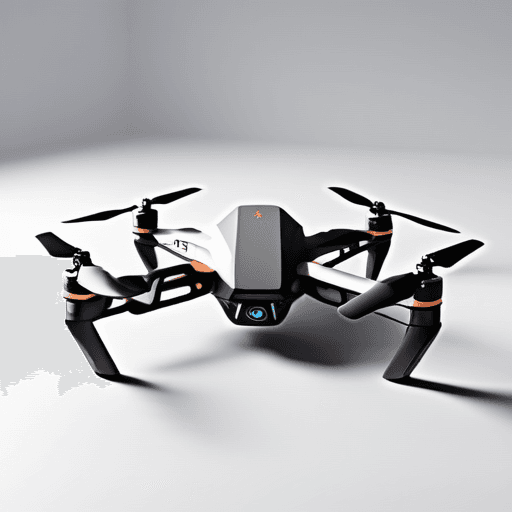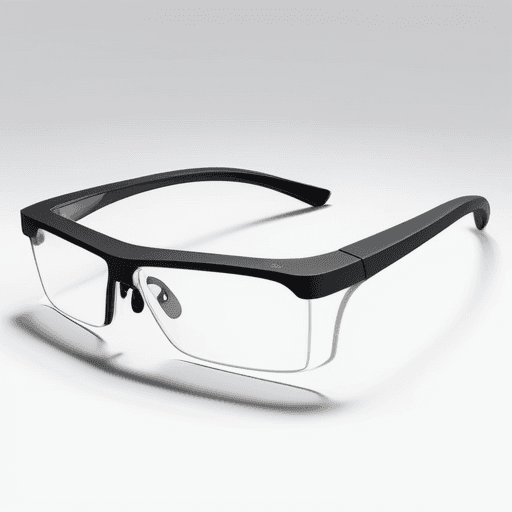
How Additive Manufacturing (3D Printing) Is Changing Mechanical Engineering
created on 03/11/2025
How Additive Manufacturing (3D Printing) Is Changing Mechanical Engineering
In recent years, few technologies have transformed product design and development as profoundly as additive manufacturing, commonly known as 3D printing. What began as a novel prototyping method has evolved into a revolutionary approach that's reshaping how mechanical engineers conceptualize, design, and manufacture components across industries.
Breaking Traditional Design Constraints
Conventional manufacturing methods have always imposed significant constraints on design possibilities. Engineers needed to consider factors like draft angles, tool access, and material waste when designing parts for traditional manufacturing processes. With additive manufacturing, these limitations are increasingly becoming relics of the past.
The ability to create complex geometries that would be impossible to produce using traditional methods has completely transformed modern approaches to engineering solutions. This capability has opened up entirely new possibilities for solving design challenges that were previously insurmountable.
Complex Geometries Made Possible
One of the most significant advantages of 3D printing is its ability to create intricate internal structures and complex geometries without additional cost or manufacturing difficulty. This capability enables:
- Lattice structures that minimize weight while maintaining structural integrity
- Organic shapes that optimize fluid flow or heat transfer
- Integrated assemblies that reduce part count and eliminate assembly steps
For mechanical engineers, this means designs can now be optimized for function rather than manufacturability, leading to more efficient components and innovative solutions to engineering challenges.
Revolutionizing the Prototyping Process
The product development cycle has been dramatically compressed thanks to rapid prototyping capabilities offered by additive manufacturing. What once took weeks or months can now be accomplished in days or even hours.
Accelerating the Design-Test-Refine Cycle
While much attention is given to 3D printing's potential for final production, its most transformative impact for most engineering teams is in the testing phase. Additive manufacturing has fundamentally changed how we validate design concepts before committing to expensive tooling and production processes.
Traditional prototyping often required:
- Lengthy lead times for machined parts
- Significant expense for one-off components
- Design compromises to accommodate prototyping limitations
- Sequential testing of design iterations
With 3D printing, engineers can:
- Create functional prototypes overnight
- Test multiple design variations simultaneously
- Produce complex assemblies as single prints to evaluate system interactions
- Implement and validate design changes within days instead of weeks
Projects that previously required six months of development time can now be completed in just six weeks using advanced 3D printing capabilities. The dramatic increase in speed from design concept to physical testing has transformed entire development processes across the industry, enabling faster innovation and more responsive product design.
From CAD to Physical Testing in Hours
The workflow advantages of additive manufacturing in the testing phase cannot be overstated. A mechanical engineer can finalize a design at the end of the workday, start a print, and have physical components ready for testing the next morning. This compressed timeline allows for:
- Rapid Failure Detection: Identifying design flaws early when changes are less costly
- Iterative Design Testing: Engineers can quickly test multiple design concepts, gather feedback, and refine their approach
- Client Involvement: Tangible prototypes can be shared with clients for early feedback
- Reduced Development Costs: Fewer resources are wasted on tooling for designs that may change
- Higher Quality End Products: More iterations lead to better-optimized final designs
Testing Specific Engineering Parameters
Modern 3D printing enables engineers to create prototypes that accurately represent specific aspects of final products:
- Functional Testing: Evaluate moving parts, snap fits, and mechanical interactions
- Form Studies: Assess ergonomics, aesthetics, and spatial requirements
- Limited Environmental Testing: Verify performance under certain temperature or stress conditions
- Assembly Verification: Confirm component interfaces and assembly procedures
Many engineering teams primarily use additive manufacturing as a rapid validation tool rather than for final production. While the finished products are typically manufactured using traditional methods, the ability to quickly test ideas with 3D printed prototypes has reduced design iteration cycles by as much as 70% in many cases. Problems that would previously have been discovered during production are now caught and solved in the prototype phase, saving considerable time and resources while improving final product quality.
Material Innovations and Printing Techniques
Advanced Materials for Specialized Applications
Early 3D printing was limited to basic plastics with relatively poor mechanical properties. Today's advanced 3D printing technologies work with an impressive range of materials:
Engineering Polymers:
- Nylon (PA12): Excellent for functional parts with good mechanical properties
- ABS: Durable with good impact resistance
- Polycarbonate (PC): High strength and heat resistance
- PEEK: Ultra-high-performance polymer for aerospace and medical applications
Metal Alloys:
- Titanium (Ti6Al4V): Exceptional strength-to-weight ratio for aerospace components
- Aluminum alloys: Lightweight solutions for heat exchangers and structural parts
- Stainless steel (316L): Corrosion resistance for industrial applications
- Inconel: Superalloys for high-temperature environments
Composite Materials:
- Carbon fiber-reinforced polymers: Superior stiffness and strength
- Glass-filled nylons: Enhanced dimensional stability
- Ceramic-polymer composites: For specialized electronic applications
Specialized Materials:
- Biocompatible resins: For medical and dental applications
- Flexible elastomers: For gaskets, seals, and wearable prototypes
- Transparent materials: For visual prototypes and optical applications
Printing Technologies for Different Requirements
Different additive manufacturing technologies offer unique capabilities for various prototyping needs:
Fused Deposition Modeling (FDM):
- Most accessible and cost-effective technology
- Ideal for concept models and basic functional prototypes
- Materials include PLA, ABS, PETG, nylon, and specialized filaments
- Layer resolution typically 0.1mm-0.3mm
Stereolithography (SLA) and Digital Light Processing (DLP):
- Superior surface finish and fine details
- Excellent for complex geometries and precision parts
- Materials include standard, flexible, and castable resins
- Layer resolution as fine as 0.025mm
Selective Laser Sintering (SLS):
- No support structures needed, allowing for complex geometries
- Excellent for functional prototypes with good mechanical properties
- Materials primarily include nylon and its composites
- Layer resolution typically 0.1mm
Metal Printing Technologies:
- Direct Metal Laser Sintering (DMLS)/Selective Laser Melting (SLM): For detailed metal parts
- Electron Beam Melting (EBM): For larger metal components with less residual stress
- Binder Jetting: Cost-effective for larger metal parts
- Layer resolutions range from 0.02mm to 0.1mm depending on technology
Multi-Material and Multi-Color Systems:
- PolyJet/Material Jetting: Capable of printing different materials/colors simultaneously
- Ideal for realistic prototypes with varying material properties
- Can achieve shore hardness values from flexible to rigid in a single print
These material and technology advances are expanding the application of 3D printed parts from simple visual prototypes to sophisticated functional test models that closely approximate the properties of final production parts. For engineering teams, selecting the right combination of material and printing technology is essential for creating prototypes that accurately represent the intended production components.
Challenges and Limitations
Despite its revolutionary potential, additive manufacturing isn't without challenges. Engineers working with these technologies still contend with:
- Size limitations of current 3D printers
- Post-processing requirements for many applications
- Quality control and certification challenges
- Cost considerations for large-scale production
It's important to understand that 3D printing isn't replacing traditional manufacturing—it's complementing it. The most successful implementations in the industry combine additive techniques with conventional manufacturing methods, applying each approach where it delivers the greatest advantage. This hybrid approach leverages the strengths of both methodologies for optimal results.
The Future of Engineering Design
Looking ahead, the integration of additive manufacturing into the mechanical engineer's toolkit is accelerating. Emerging trends include:
- Multi-material printing enabling parts with varying properties
- Integrated electronics within 3D printed structures
- AI-driven generative design optimized for additive manufacturing
- Distributed manufacturing and on-demand production
For today's engineers, proficiency with 3D design and additive manufacturing processes is rapidly becoming as fundamental as traditional drafting and machining knowledge was for previous generations.
Conclusion
Additive manufacturing has moved beyond being merely a prototyping tool to become a transformative force in mechanical engineering. By enabling complex geometries, accelerating development cycles, and expanding material possibilities, 3D printing is fundamentally changing how engineers approach design challenges.
For businesses and organizations, embracing these capabilities means opportunities for innovation, efficiency, and competitive advantage. For individual engineers, developing expertise in design for additive manufacturing represents a valuable skill set in an evolving industry landscape.
As we continue to push the boundaries of what's possible with these technologies, one thing is clear: additive manufacturing isn't just changing how we make things—it's changing what we can imagine making in the first place.
Share this article

Vlad Cucos is the founder of Rooster Dynamics and serves as its head mechanical engineer. With a deep passion for innovation and a commitment to staying ahead of the curve in the latest technologies, Vlad combines technical expertise with visionary leadership. His dedication to creating impactful solutions drives the success of every project he undertakes, making him a trusted voice in the field of mechanical engineering and product design.
Related Articles

The Future of Prototyping: Trends and Technologies to Watch

Mechanical Engineering Guide: Tips for First-Time Product Designers

